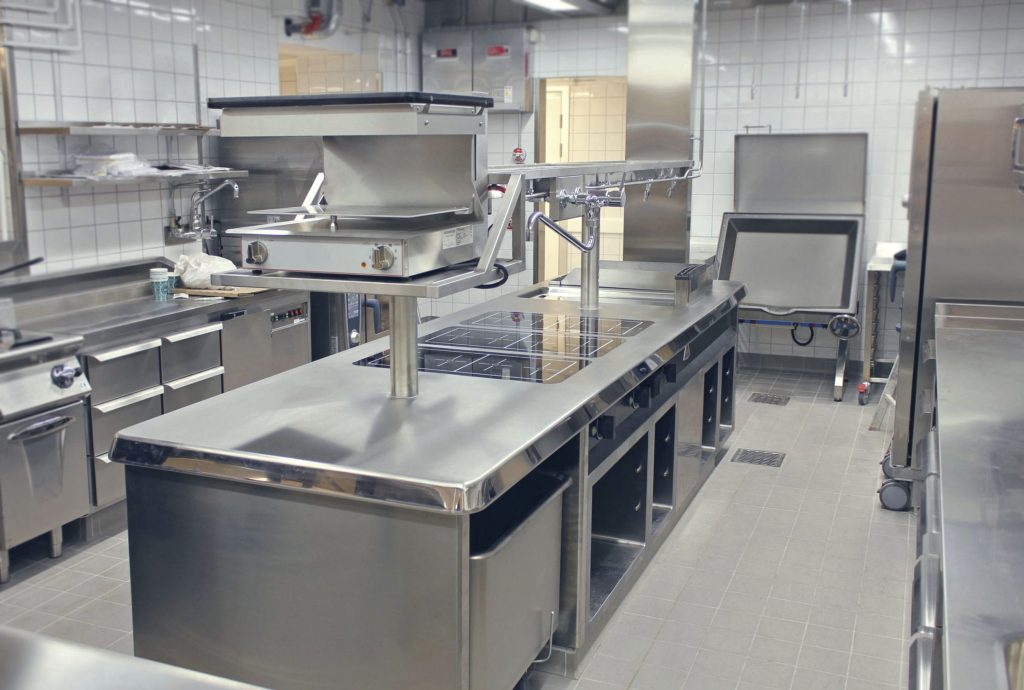
Setting up an industrial kitchen can be a complex and time-consuming task, but with the right approach, it can also be rewarding and profitable. Whether starting from scratch with your restaurant, expanding an existing one, or creating a commercial kitchen for catering purposes – there are several essential steps that must be taken in order to guarantee everything runs smoothly and efficiently.
Equipment and Layout
One of the most crucial steps when setting up an industrial kitchen is selecting the appropriate equipment and layout. Take into account your operation’s size, needs, as well as budget when selecting items for your space. A well-designed kitchen should feature various appliances like refrigeration units, ovens, grills, and cooking surfaces to meet all these requirements.
When designing your kitchen layout, it’s essential to take into account the position of appliances and workstations. A well-thought-out layout can improve efficiency in the space while reducing accidents and making it simpler for staff members to work effectively. When planning this area out, factor in factors like electrical outlets, plumbing fixtures, and ventilation systems as well.
Facilities and Supplies
Establishing an industrial kitchen requires having all the necessary facilities and supplies. This includes items like sinks, storage spaces, and preparation areas, as well as utensils, plates, and serving ware. Take into account your operation’s needs as well as what type of food will be prepared when selecting these supplies and facilities.

Food Safety and Regulations
It’s essential to be aware of the food safety regulations that apply to your kitchen. These may differ based on where you operate or the type of operation but typically include requirements for sanitation, food handling, and storage. Make sure you understand these regulations that pertain to your kitchen so you can take steps to comply with them by obtaining the necessary licenses and certifications.
Staffing and Training
When setting up an industrial kitchen, you must consider both staffing and training needs. This includes hiring the appropriate personnel, such as chefs, cooks, and dishwashers, and providing them with necessary instruction and support. Take into account their skillsets and experience when selecting your team members; additionally, keep in mind their availability when selecting personnel for your kitchen venture.
Equipment Cleaning and Maintenance
Your industrial kitchen should have an organized maintenance plan in order to give your staff a chance to keep it performing optimally. When operating this type of space, you must factor in time for items like ovens or refrigeration units to be properly cleaned and maintained. With an effective plan in place, staff members will have no trouble completing necessary cleanings and repairs while keeping their machinery in top condition.
Cleaning and Sanitizing
When setting up an industrial kitchen, it’s essential to provide staff members with sanitizing solutions and cleaners. This will enable them to properly maintain your kitchen by eliminating dirt and grime that can foster bacteria growth. Supplies like these will also enable them to clean various surfaces, equipment, and areas in your kitchen efficiently.
Conclusion
Setting up an industrial kitchen can be a complex and time-consuming task, but with the right approach, it can also be rewarding and profitable. By taking into account factors like equipment/layout, facilities/supplies, food safety regulations, and staffing/training needs, you will ensure your kitchen is set up correctly so it can serve customers efficiently while meeting business targets. With well-designed facilities combined with qualified personnel as well as necessary supplies, you’ll create a successful, long-lasting operation that thrives for years to come.







